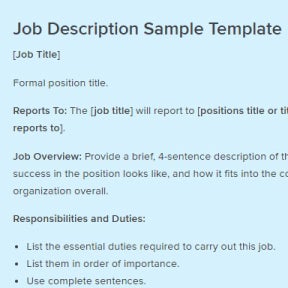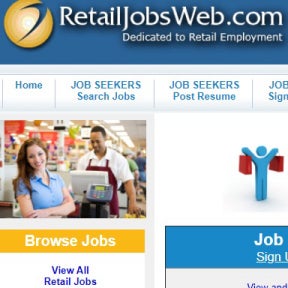How to Hire a Temporary Worker:

A step-by-step guide to hiring the best temporary workers for your business. Includes a full hiring process to help you recruit the best temporary workers fast.
Determine your needs.
Create a clear outline of the job.

What is the role of a temporary employee in your business? Will they be required to fill multiple job roles? Before starting your hiring process, make sure you're clear about the specific responsibilities you need a temporary employee to fulfill. Start by creating a detailed outline of all the job specifics.
Be sure to include the responsibilities, duration of employment, and training requirements in your job outline.
Identify your ideal candidate.

Establish the skills, experience, and characteristics of your ideal candidate and make a list of them. Generally, temporary employees need to fill a position immediately, which means businesses won't have time to adequately train temporary workers.
Search instead for candidates who already possess the appropriate soft skills and expertise, such as excellent communication and adaptability skills, and previous experience working with customers.
Hiring candidates who are already equipped for the job will minimize the time and cost spent on training, and also reduce the risk of injuries if you're working in an environment such as a warehouse or a factory.
Determine the type of temporary worker you need.

There are three categories of temporary employees: part-time, temporary, and seasonal workers.
A part-time employee is paid an hourly wage and is not entitled to regular employee benefits like healthcare. However, employers are still required to adhere to all business regulations.
A temporary employee is typically employed to fill a gap in employment needs at businesses that are either under-resourced or have a temporary vacancy available because of a worker on leave. Also referred to as temps, these employees can also cover a position until a full-time hire is made.
A seasonal employee is hired during peak traffic periods to help businesses cope with the higher demand. For instance, seasonal employees are generally hired during the holiday season, with most jobs stemming from retail stores or entertainment venues such as theme parks, movie theatres, and restaurants.
Remember to mention the type of temporary worker you're searching for in the job description.
Attract the best temporary workers.
Create a compelling job post.

Now that you've established your business's needs and outlined the specifics of the job, you can start drafting a job description. Your job description should list all job requirements and responsibilities, including details about the skills, qualifications, and experience required, as well as any physical demands of the job and the timeline.
A job description typically has four sections:
Job title: Use of a job title that everyone can understand, even if your business uses a different label for a position.
Business information: Include a brief summary of your business, touching on your history, business values, and significant milestones.
Description of job responsibilities: List the daily job responsibilities as well as any other job functions they'd need to complete over the period of employment.
Explanation of job requirements: Carefully list all of the job requirements, including qualifications, timeline, skills, and characteristics.
Make use of our wide range of customizable job description templates, including grocery clerk, and retail sales consultant templates.
Use a job description template to make it easier.

A job description template will contain most of the boilerplate information you'll need such as the responsibilities and qualifications, making your job a bit easier.
Pick the perfect template from our list of job descriptions.
Start the recruiting process.
Ask employees for recommendations.

Your current employees are a great source for referrals. Employees may already have personal recommendations or be able to attract temporary workers faster using their connections and social media platforms. This option is great if you want to save money on recruiting firms or software.
Source candidates from local colleges and universities.

If your business requires temporary or seasonal workers, career services departments at local colleges are a great place for recruiting candidates. Many colleges also have job boards available to help students find easy work.
Reach out to former temporary employees.

If your business frequently hires seasonal or part-time workers, consider approaching these candidates with a job offer. This is a great way to shorten your recruitment process as candidates will already be familiar with the job requirements and responsibilities.
Use social media.

If your business already has an active online presence, you may want to consider advertising your job description on social media platforms as most of your followers will be familiar with your brand and services.
Advertise on job boards.

If your business falls into a niche market, consider posting on niche job boards. This option helps you narrow your search and attract candidates already looking for jobs in your field. Popular niche job boards include retail job boards and sales job boards.
Use traditional advertising.

Depending on the job you're offering, you may be able to use traditional methods to get the word out, such as flyers and posters. These methods may be especially useful when trying to attract candidates from a specific area or institution.
You could also advertise temporary positions by displaying posters at your workplace or distributing them to local businesses, thereby attracting candidates who live in the area and are likely familiar with your brand already.
Vet your candidates.
Send a screening email.

Review all applications and shortlist between 10 and 20 candidates that meet most of your job requirements. To weed out any unsuitable candidates, send a few screening questions via email.
Some questions you may consider asking include:
- What are your strengths?
- What are your weaknesses?
- Why are you interested in this temporary position?
- How many people were on your team at your last job?
- What would you like to learn in this job?
- Are you hoping to transition to a full-time position?
- How would you describe your ideal work environment?
Interview potential candidates.

Once you've chosen your top candidates, the interview process can officially start. Each interview should last at least 30 minutes and include questions that focus on the candidates' characteristics and skills.
Read our step-by-step guide on how to interview candidates.
Use the in-person interview to verify the answers that were provided in the screening email. Any discrepancies may be red flags.
Conduct a background check.

Even though temporary employees will only work at your business for a certain time period, it's vital that you conduct standard background checks like criminal records, social security validation, and address history. Check out our guide on how to do employee background checks for more detailed information.
Hire your new temporary worker.
Make an offer.

Once you've completed the screening and interviews, you will most likely have one or more candidates that meet all requirements. If there are multiple candidates shortlisted, consider conducting second interviews or asking candidates to complete assessments; this option will help candidates showcase their practical skills.
After you've selected the most suitable candidate for the position, send them a job offer letter which includes the start date, compensation, work hours, and job title. This process may be followed by a negotiation period. Once both employer and employee are satisfied, you can officially start legalizing the agreement.
For more information, follow our detailed guide on how to make a job offer.
Comply with all legal requirements.

Each temporary employee type may have different legal requirements and business owners are expected to comply with all state and federal employment laws. Before choosing a temporary worker for your business, research the different legal requirements and employment and tax regulations.
Create a standard contractor agreement that can be customized for projects or short-term positions. This is great for businesses that frequently make use of temporary or season workers. To cover your basics, the legal contract should outline compensation, project scope, business policies, employee benefits, and job requirements.
Complete an employment eligibility verification form (I-9) no more than 3 days after an employee is hired. In the United States, all employers are required to verify their new employee's identity and eligibility to work in the country.
Determine if you are required to provide unemployment benefits. In each state, there are different laws that specify whether an employer is required to provide unemployment benefits for temporary workers. These benefits are generally not extended to seasonal workers. We recommend checking with your state’s department of labor.
Have the temporary employee sign a nondisclosure agreement (NDA). While this may depend on the nature of your work and business, it's a wise choice if you need to protect your intellectual property.
See our full list of new hire forms to ensure your business complies with all legal requirements.
Onboard your temporary worker.

Be sure to create a positive onboarding experience for your new temporary worker. Now that you've successfully brought new candidates on board, it's your responsibility to ensure they feel welcome and part of your team. An organized onboarding process is a positive reflection of your brand and may count in your favor, should you extend a permanent offer of employment to your temporary worker.
Bonus Step: Make use of a staffing or recruitment firm.
Many businesses opt to make use of a staffing agency when hiring temporary employees. While this option may cost your business more money, you will be able to streamline the entire hiring process as the staffing agency will complete it for you.
Benefits of a staffing agency:
- Quick hiring process.
- Applicants are pre-screened to ensure they meet job requirements.
- Applicants undergo an assessment process.
- Training is provided.
- The staffing agency takes care of all payments and manages tax obligations.
The Pros and Cons of Hiring Temporary Workers:
- Reduced benefit requirements.
- Reduced short-term labor costs.
- Ability to assess potential employees before permanently hiring them.
- Temporary workers help with business efficiently.
- Training and time costs.
- Potential contract buyout fees.
- Possible lack of commitment from temporary employees.
- May need supervision, especially in jobs that require safety training.
Best Job Posting Sites for Temporary Workers:
Job Posting Site | Pricing |
|---|---|
Free. | |
Free. | |
LinkedIn Recruiter ranges between $2,399.00 and $8,999.00 per year. | |
Free. |
What to Avoid When Hiring Temporary Employees:
Not thinking long-term. Work to build long-lasting relationships with temporary employees, as you never know when you may need to fill a full-time position.
Not vetting job candidates as if they will be there permanently. Conduct background checks, ask for two forms of identification, ensure all employees sign a contract, and keep copies of all important documentation.
Slow hiring process. Temporary workers are generally hired when businesses need to fill an urgent vacancy. Therefore, businesses should move quickly but ensure the candidate meets the immediate job requirements.
Not making job responsibilities clear. Inform temporary workers on what time they need to be at work, the duration of their lunch, whether mobile devices are allowed, and any other job expectations.


